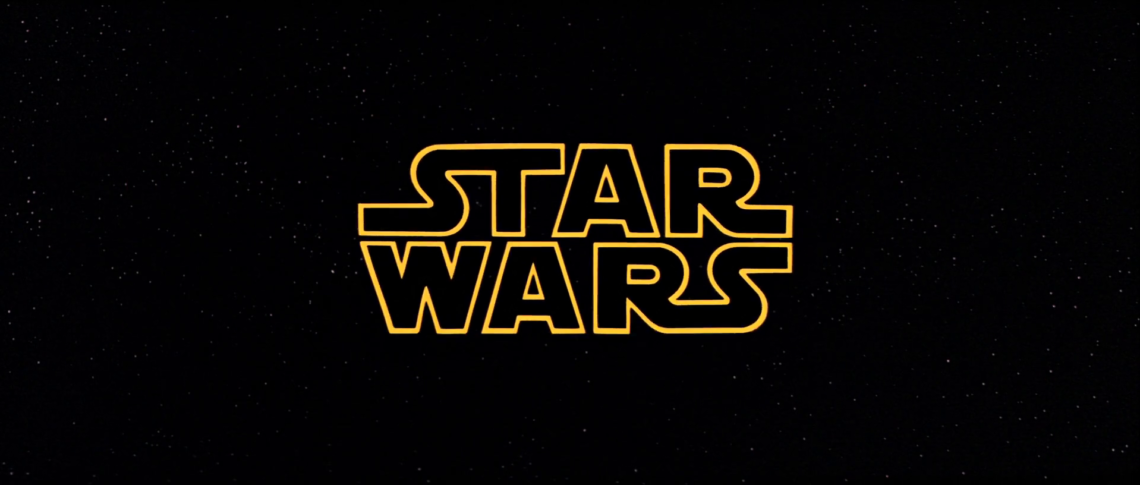
#500 – Star Wars Episode IV: A New Hope (1977)
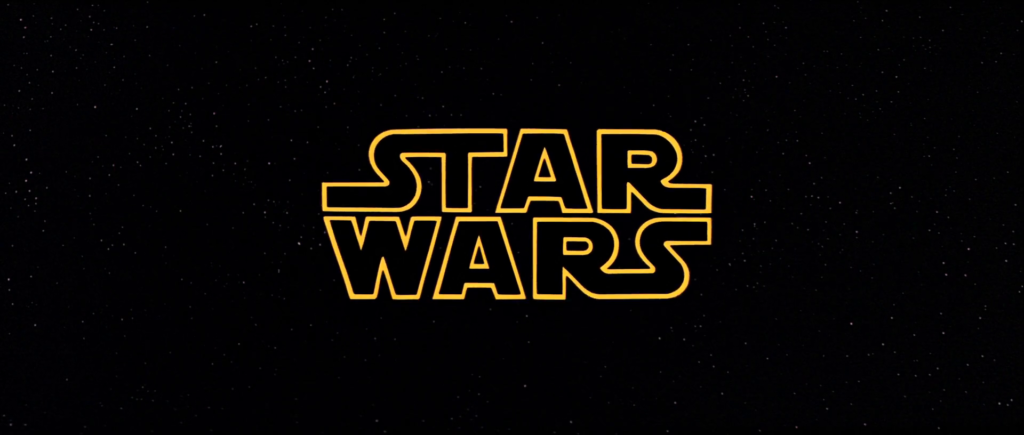
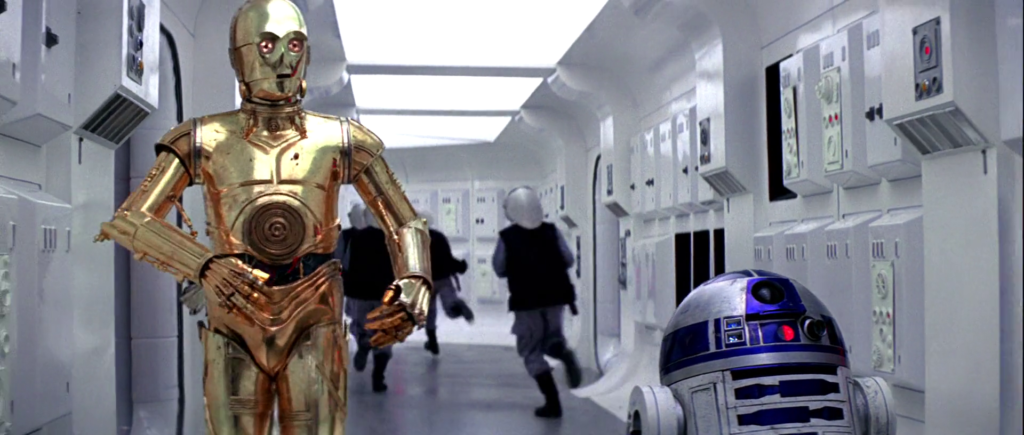
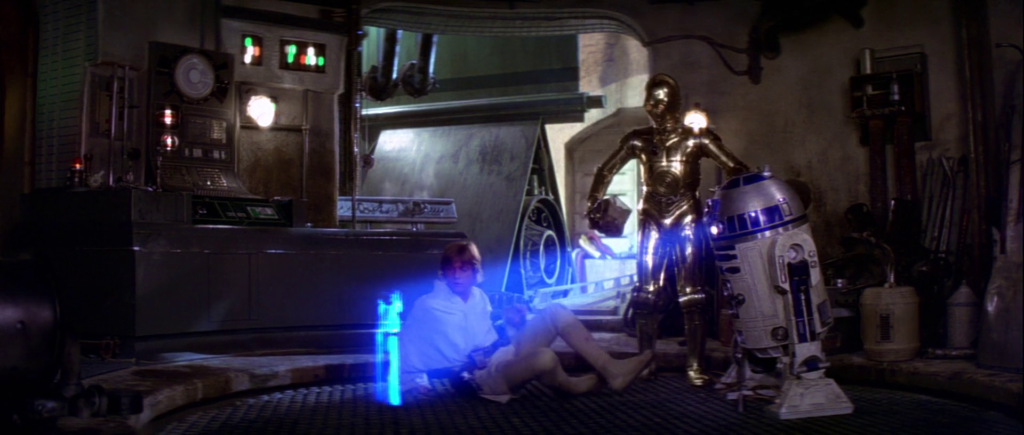
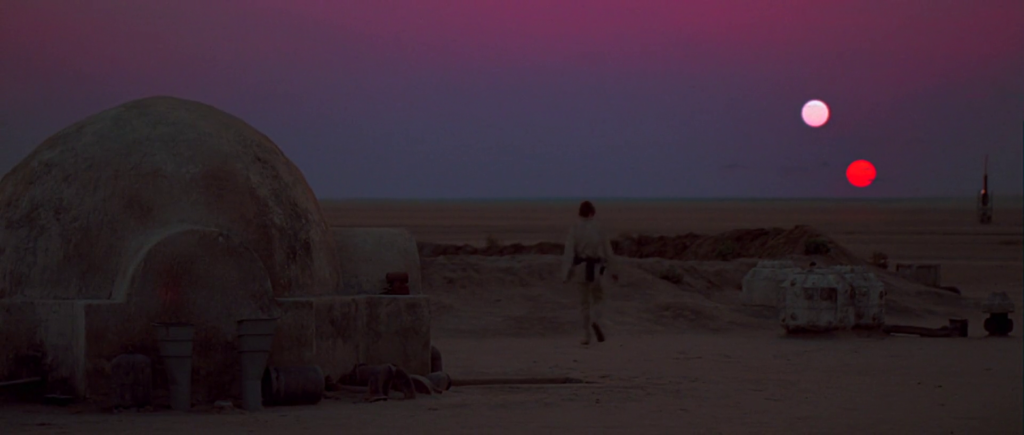
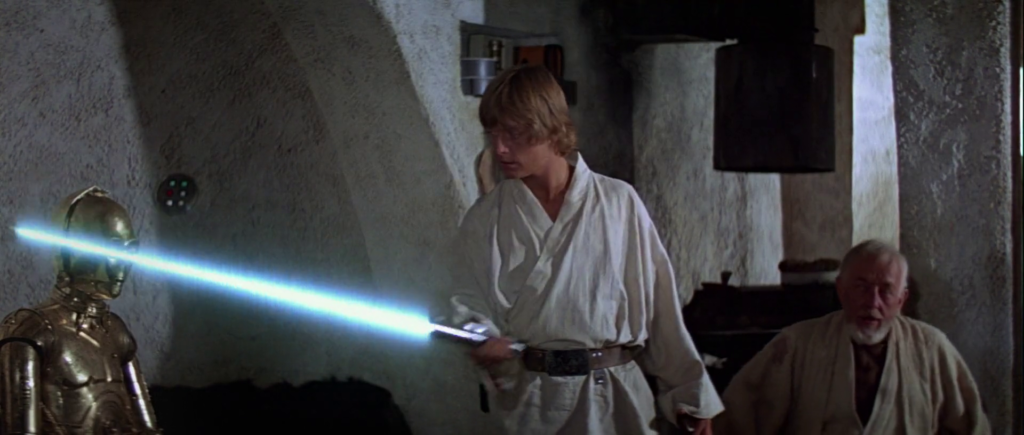
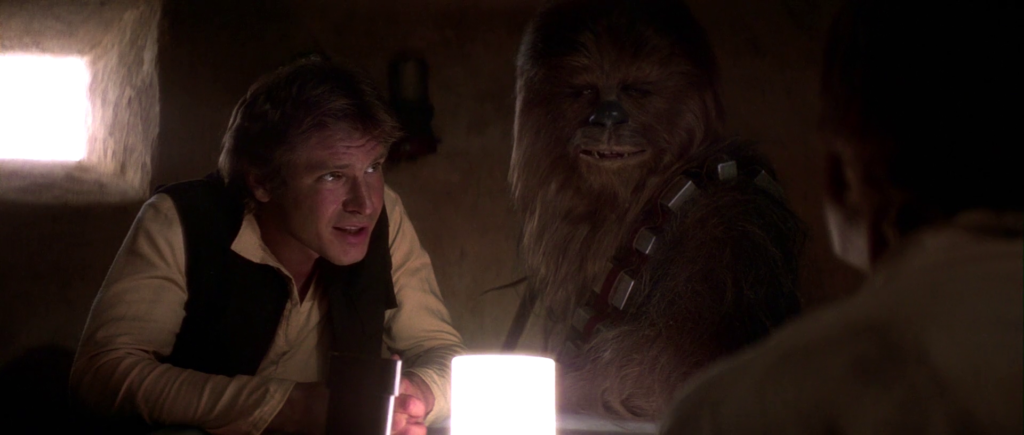
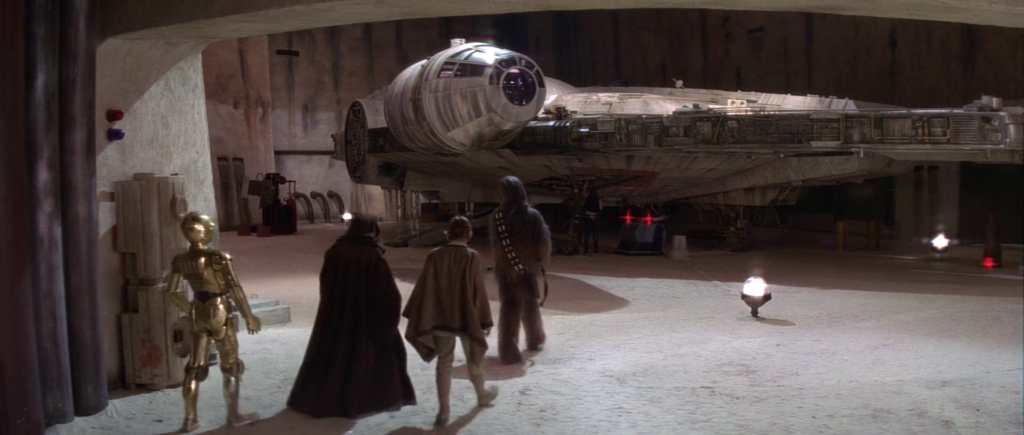
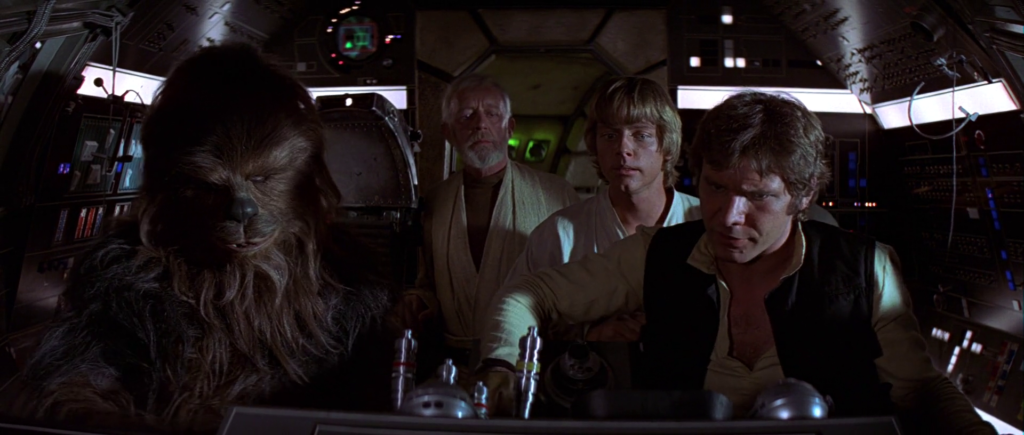
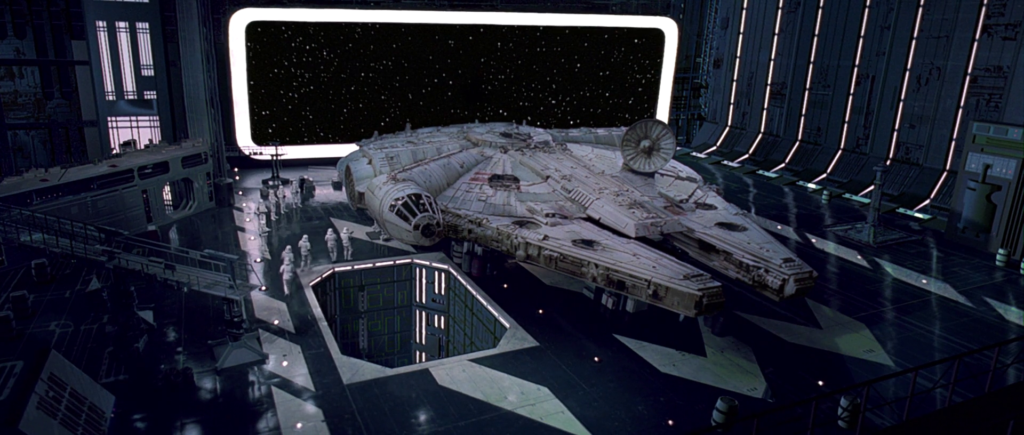
Star Wars Episode IV: A New Hope (1977)
Film review #500
Director: George Lucas
SYNOPSIS: A long time ago, in a galaxy far away…the plans for the evil galactic empire’s new battle station are stolen by the rebel alliance and placed in a droid to escape to the planet Tatooine. Luke Skywalker comes into possession of the droid and discovers a hidden message about the plans. With the droids in tow, Luke sets off to find Obi-Wan Kenobi and learn the ways of the force to bring down the empire, led by the ruthless Darth Vader…
THOUGHTS/ANALYSIS: Happy 500th film review! It’s been a long road to get here, and many hours have been invested into watching the best and worst (mostly the worst) of science-fiction films from all over the world over the last ten years. The plan was always to save this one for the 500th review, because I have famously never watched any Star wars film all the way through, and I have never had any real interest in the franchise, so this is a big milestone for me. So let’s take a look at why the film was so successful, why I was never interested in it, and whether actually watching the film has changed my mind shall we?
Star Wars (subtitled Episode IV: A New Hope after the initial cinema release) is a 1977 science-fiction film directed by George Lucas. It is the first film released in the Star Wars franchise. The film starts off throwing us right in the middle of a story, as outlined in the title crawl: the rebels fighting the evil galactic empire have uncovered the plans for their ultimate weapon: a gigantic space station that can destroy planets. Princess Leia hides the plans in a droid, which is then sent to the planet Tatooine and picked up by a young farm hand named Luke Skywalker. Determined to deliver the message and plans to one Obi-Wan Kenobi, and embark on an adventure to save the galaxy. Originally released as a stand-alone film, Star Wars really throws you right into this “galaxy far away” without much establishing. However, as the film opens up with an entertaining action sequence that shows off the world and its inhabitants better than any exposition could do. The story is pretty much a simple “good vs evil” plot, and I feel like it’s a waste of time trying to find any deep allegories in the world or characters. maybe George Lucas tried to build something more deeper and significant in his constant re-edits (more on that later), but taking the film as a stand-alone feature, it sets its scene around it’s characters fine, but when they talk about the galaxy at large with regards to the senate or whatever, we don’t see or hear much about it, which is a bit disjointing. Personally, I was never too interested in the world-building of Star Wars as this “galaxy far away” was a bit too disconnecting for me as a kid, and especially with their being humans there as well just made no sense. Maybe it’s a small point to get hung up on, but that was the kind of kid I was.
So after the first action scene, we start following the two droids that escape with the plans: C3PO and R2D2. We follow them for…quite a while actually: nearly half an hour of their bickering back and forth before the film moves on. honestly, I think the beginning could have been easily shortened to improve the flow of the film. If the aim was to show the droids and how they fit into the world, then there is certainly some of that in the beginning, but it isn’t really furthered in the latter part of the film. for example, there seems to be a deliberate show of how droids are treated as second-rate beings by humans in the beginning as if droid discrimination is rife in this galaxy, but it is completely forgotten about when the human characters become the centre of the story, and never confronted in the film. Maybe it would have been good for the contribution the droids made in defeating the empire could have been recognised and changed people’s attitudes towards them, but that doesn’t happen. Again, the film is basically a good vs. evil story that introduced a lot of things in passing, but were further explored in subsequent films and other media.
One thing I noticed about the story is a lot of the plot points are strung together by a chain of massive conveniences. The droids are on a ship, which coincidentally has the man they need to find, and are caught and sold to Luke, who just so happens to know Obi-Wan Kenobi, and so on. It’s not really an organic method of storytelling that is quite absurd the more you think about it, and that’s even before you take into account the lore from the prequels and how Obi-Wan should know who C3PO and R2D2 etc.
It is well known that George Lucas was inspired by watching the film serials of the 40s and 50s when he was a child, and that heavily influenced the likes of Star Wars and Indiana Jones. The fairly simplistic nature of the Star Wars “Good vs. evil” story does feel like it could have been the basis of such a serial. The characters too, are reminiscent of that: the characters are all white men, with one woman in the entire cast. Luke is the “blank slate” protagonist that people are to identify and project themselves into as he explores this new world with the viewer. Han Solo is the more typical, action-focused lead, and Leia is the only female character that unsurprisingly needs to be rescued. Darth Vader takes the role of the “masked villain” whose identity was often kept secret until the last chapter of the serial. His appearance is also highly reminiscent of the serial villain “The lightning” from The Fighting Devil Dogs: Who could fire lightning from his hand (A power not shown in this Star Wars film, but is in others), and flies around in a triangular plane that you could say is similar to the “star destroyer” ships seen in Star Wars. It’s difficult to say just how much of an influence these had, given that there would have been no way to re-watch these serials or dig up any information back in 1977 when there was no home releases, but the similarities are way to striking in some regards to be dismissed as coincidence. There is some effort to give some of the characters a more unique personality: Han Solo has a bit of an anti-hero edge that’s not too unique, but his character and performance by Harrison Ford are definitely memorable. Princess Leia too, while still being the sole female character that needs to be rescued from being kidnapped, but her snide remarks, constant backtalking and her eagerness to get stuck in the action with the guys definitely set her apart from the trope she finds herself in. I’m not sure the title of “princess” really helps her character in this respect though, as it isn’t really explained what or where is is supposed to be a princess of. nevertheless, Carrie Fisher’s performance is definitely a stand out from an acting perspective.
There was apparently very little faith in Star Wars being a success, and George Lucas was given a “small” budget of eleven million dollars to work with, which in 1977, while not a big budget, is not nothing. What the film creates is a very unique aesthetic: not the pure, sterile white that is expected from sci-fi (most of the time), but a world covered in grime and dirt, and that feels lived in. The detailed textures on the models of the ships really bring the scenes to life, and it’s pretty impressive how much detail they get on them. there’s definitely a distinct vision in the film’s aesthetic, and for the most part, it is brought to life with no big complaints. The big budget film score by John Williams also provides a lot of memorable acoustic moments.
I should probably mention something about the edits to this film: George Lucas has made many modifications to this film is particular since it was released as a standalone film in 1977. Some of them are cosmetic and actually enhance the world, such as recolouring and adjusting contrast on some of the scenes and models, which I think helps them stand out a lot better. Some of the additions though are pretty pointless, and sometimes harmful to the film. The constant reworking of Han shooting Greedo first is infamously silly and in my opinion just didn’t need to be done. The added CGI characters in some of the establishing shots look really outdated and out of place in the film, and while I get that they are there to make the world more busy, it just ends up being distracting. The added scene with Jabba the Hutt was cut from the original, which I think made sense, as it messes up the reveal of the Millennium Falcon when we see it with Luke for the first time. Out of all the changes, I still don’t get why all the dialogue with Luke being attracted to Leia wasn’t altered or removed, since it’s just weird when we know they are revealed to be siblings in the sequels (spoilers, sorry). I know that they also don’t have any idea about their relation (I don’t think they were supposed to be related when the film was written, but it still seems a bit odd that the whole thing has been left untouched while so much of the rest of the film has been cosmetically altered for no real benefit.
Overall, Star Wars Episode IV: A New Hope is a perfectly serviceable film about good versus evil in a science-fiction setting. It has it’s own unique aesthetic and vision, and adds in enough character development and drama to make it interesting for viewers of all demographics. the influence it had is undeniable: it was a landmark moment in sci-fi that allowed the genre to be taken seriously again, after the low budget, b-movie monster films of the 60’s. However, I do still hold the opinion that part of that was good timing on the film’s release, rather than anything in particular that the film accomplished: it was expected to be a mediocre performer that no one wanted to take a chance on, and I think science-fiction fans were waiting for a film like Star Wars to get into. watching the film properly hasn’t changed my opinion of the franchise, and I’m not suddenly interested in watching the other films or exploring the franchise (although I will get around to viewing the other films eventually), but yes, it is a decent sci-fi film that breathed new life into the genre and was able to fire people’s imaginations, as well as being entertaining. There are plenty of problems with it though, such as the ridiculous reliance on chance encounters for plot convenience, some wobbly acting in parts, and pacing, so all in all, it has done little to sway me, but I see why people would and could enjoy it.

